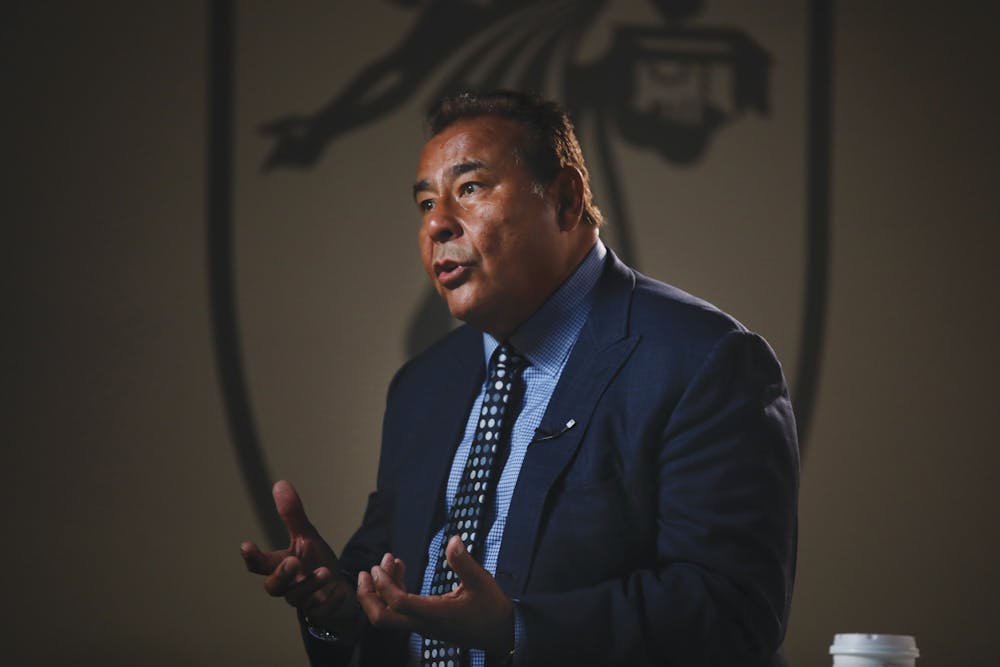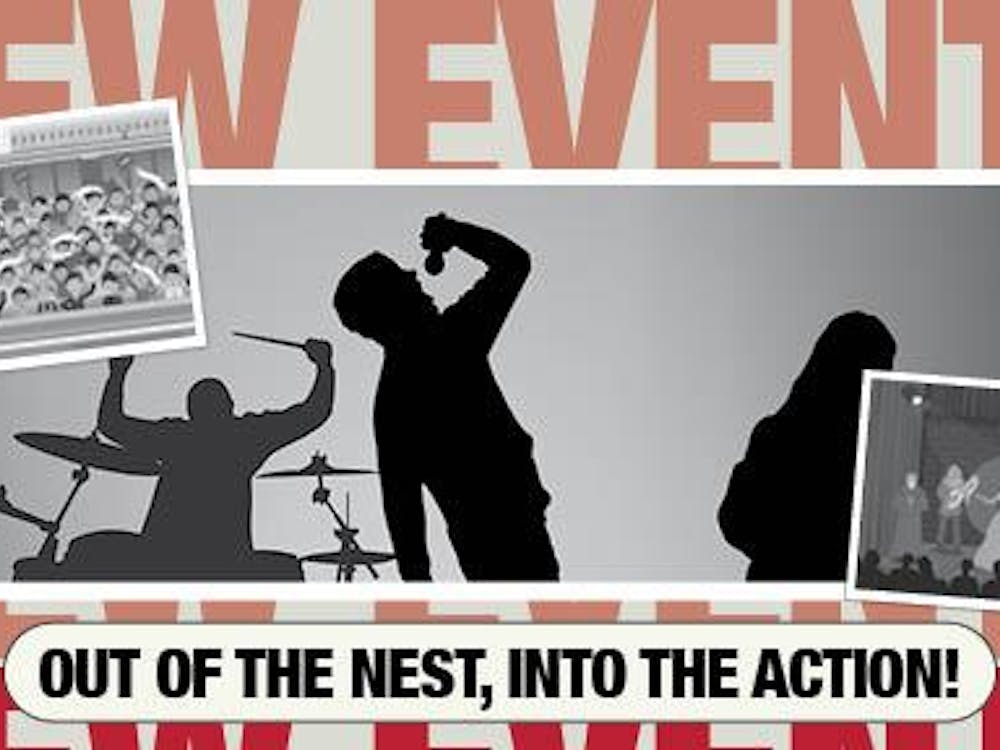As a young boy on the west side of San Antonio, looking around and reading stories about his community in the newspapers, John Quiñones always knew he wanted to be a storyteller.
“I grew up in a very Hispanic community,” said Quiñones, award-winning broadcast journalist and author. “[The stories] are all very negative, right? I knew there were positive stories in my community that need to be told … and I knew I was the person to tell those stories.”
Now, Quiñones has worked as a correspondent for ABC News, reported for shows like “20/20” and “Nightline,” and hosted “What Would You Do?”, a popular hidden camera show examining how people behave in certain situations.
Quiñones said he believes it was important for him to get a journalism education, especially in graduate school, which is why he received his master’s degree from Columbia University in 1979 after graduating from St. Mary’s University in 1974.
Because he is Hispanic, Quiñones said he felt “no one would hire” him at TV stations in Texas without more of an education.
“Sometimes, people of color have to be twice as good as the other folks,” he said. “Maybe other people don’t have to try as hard, but I certainly did. And in the end, it made me better qualified.”
As a reporter, Quiñones covered Latin America, and he was able to go to places in South America like Nicaragua, El Salvador and Panama. At the time, Quiñones said news stations wanted people who could speak Spanish, which he grew up speaking.
Quiñones also said being Latino helped him cover issues others may not have been able to, such as a story he did on 300 children who lived in the sewer systems in Colombia, where he said the kids were more receptive to him because they did not see him as an outsider.
It wasn’t easy for Quiñones to get to where he is, and he said his mother’s advice kept him going. He also surrounded himself with friends who believed in building a better future for themselves.
“I chose to go to high school outside my district after middle school,” Quiñones said. “I should have gone to … an all-Hispanic school, but I knew if I went there, I would be speaking Spanish all the time, which is a beautiful language, but I wanted to go into broadcasting. And I knew with an accent, I wouldn’t be able to get into television.”
Quiñones said he also got involved with drama club in high school because he was “painfully shy,” and getting involved helped him slow down his speech and enunciate more.
While in high school, Quiñones said his 10th grade English teacher encouraged him to go into journalism and work for the school newspaper because she loved his writing. Within a month, he was chief of editorials.
“I was doing what I thought were big investigative stories like, ‘why are teachers parking in students’ parking spaces?’” he said. “And I loved it.”
While working for “20/20,” Quiñones began hosting “What Would You Do?,” a segment seeing what people would do when encountered by different situations, with hidden cameras in public. While doing the segment, people began asking him to do more scenarios until “What Would You Do?” became its own show.
“I love to be able to do that because, in the end, that’s the true test of character,” he said. “Like, what do you do when no one is watching?”
On April 11, Quiñones visited Ball State as part of the Letterman Lecture Series, something he said he looked forward to because he’s “always been a huge fan of David Letterman.” He had also never been to Ball State before.
Quiñones also said he looked forward to visiting so he could talk to young journalism students, something he always tries to do if he can. He felt all students, regardless of major, could learn from his talk.
“I think they’ll learn all about perseverance and believing in ourselves and not taking no for an answer,” Quiñones said. “When you see someone — especially when you see someone who looks like you — and you have been told that you’re not capable, you believe that you can make it, too. That’s my message — it’s very simple.”
Quiñones has spoken at multiple universities before, such as the University of Akron last week. Each time he has spoken, he said, the response from the student body and community has been positive.
“It’s very rewarding when you see these young faces who are touched by the stories I tell, which come from the heart,” Quiñones said.
Kylen Matthews, Indiana Academy junior, attended Quiñones’ talk Monday and said it was “very inspirational” and “a dream come true” because she grew up watching “What Would You Do?”
For Matthews, Quiñones has been a role model for her for awhile, and his show helped her understand what wasn’t normal about the world and what needed to change.
“I think I have a very negative perception of the earth and what it is right now, but I think he actually restored some of my faith in humanity a little bit,” Matthews said.
Eris Robinson, freshman media major, attended Quiñones’ talk Monday because she said he is in the industry she has been wanting to enter for a long time and felt he could provide some more insight into what it’s like and getting started.
“He’s been in the business for a really long time,” she said, “and who better to listen to than [him]?”
Robinson said she heard Quiñones was coming to Ball State after someone ran into her classroom to tell everyone about the news, and her professors had talked about it as well. She also said Quiñones’ talk gave her more insight into what it was like for Hispanic people and other minorities to grow up, like her boyfriend, for example.
“It was so cool to see someone from his community who had come so far,” she said. “In that regard, it was really nice to see him and the students talk about that kind of stuff.”
Encouraging students from the same background as him was what Quiñones wanted to do while at Ball State and what he said he always aims to do with his talks.
“I want to meet everyone and hope that, somehow, I can inspire — especially young people — to shoot for the stars,” he said.
Contact Maya Wilkins with comments at mrwilkins@bsu.edu or on Twitter @mayawilkinss. Contact Krystiana Brosher with comments at krystiana.brosher@bsu.edu or on Twitter @Krystiana_21.





